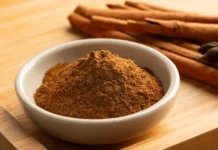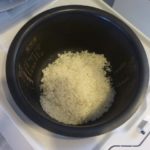Japanese cuisine is renowned for its delicious and enticing dishes that captivate diners from around the world. Among these dishes, Bento, the traditional lunch box, stands out as a flavorful and visually appealing option. In this article, we will explore five interesting facts about Japanese Bento.
1 Bento’s origins date back to the 14th century
In the Kamakura period of the 14th century, when Japan’s economy relied heavily on agriculture, farmers who worked outside the fields had to prepare their own lunches. They began making Bento, which soon became a common practice among people from all walks of life, including nobility and kings who used it for special occasions such as festivals and banquets.
 Bento was born in 1300
Bento was born in 1300
2 Bento is a form of culinary art
Bento is not a mere assemblage of dishes in a lunch box; it is a reflection of the Japanese people’s attention to detail and artistry. By examining the form and arrangement of the dishes, one can discern the personality of the person who prepared the Bento.
 Bento is an artistic work
Bento is an artistic work
3 Traditional and Modern Bento
Traditional Bento: Shokado Bento and Hinomaru Bento
Shokado Bento: These lunch boxes feature multiple compartments, each designed to hold different types of food such as rice, vegetables, and soup. Shokado Bento is often favored by intellectuals and older individuals due to its organized arrangement.
 Shokado Bento
Shokado Bento
Hinomaru Bento: In contrast to Shokado Bento, Hinomaru Bento is a simple lunch box consisting of white rice with a salted plum in the center, symbolizing the Japanese national flag. Hinomaru Bento has been popular throughout history, especially during times of war, hardship, and poverty.
 Hinomaru Bento
Hinomaru Bento
Modern Bento: Kyaraben and Oekakiben
Kyaraben Bento: These lunch boxes are adorned with delightful shapes of cute animals inspired by cartoons and comics. Kyaraben Bento appeals particularly to children and young adults.
 Kyaraben Bento
Kyaraben Bento
Oekakiben Bento: When it comes to lunch boxes that possess a strong artistic essence, Oekakiben takes the spotlight. These meticulously decorated lunch boxes incorporate every detail to create vivid and captivating imagery.
 Oekakiben Bento
Oekakiben Bento
4 The Bento profession thrives in Japan
With the rising popularity and accessibility of Bento, the Bento profession in Japan is expanding. An average Bento worker can earn up to approximately 25,000,000 VND/month when converted into Vietnamese dong.
 The Bento profession is very popular in Japan
The Bento profession is very popular in Japan
5 Expressing emotions through Bento
The art of making Bento allows individuals to express their aesthetics, creativity, and patience. Housewives and lovers alike can convey their emotions through skillfully crafted Bento boxes. Husbands and boyfriends take pride in their loved one’s Bento, while children relish in the meals prepared by their mothers.
 Expressing emotions through Bento
Expressing emotions through Bento
Above are our insights into five fascinating aspects of Japanese Bento. We hope this article has provided you with ample information about this traditional Japanese culinary delight.
What do you need to prepare for Bento making?
If you’re feeling confused about what to buy when choosing Bento tools, this article will provide you with information about the most essential basic Bento making utensils!




































